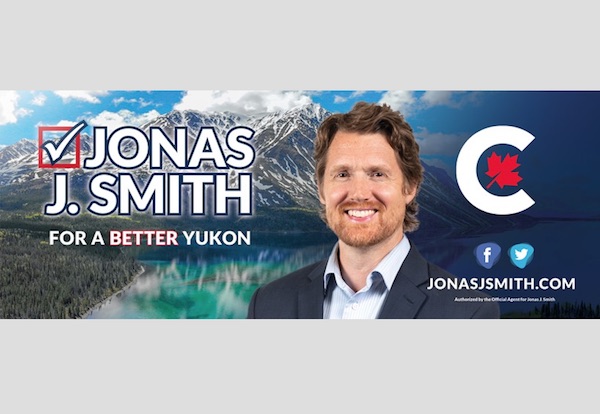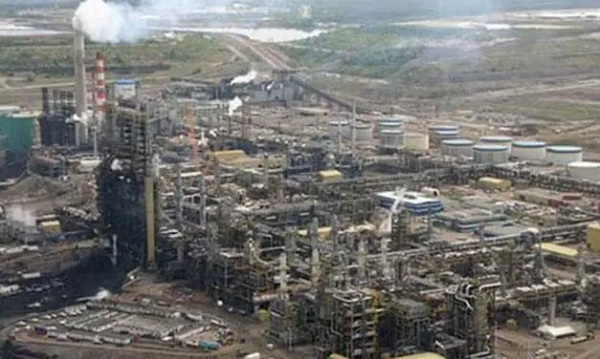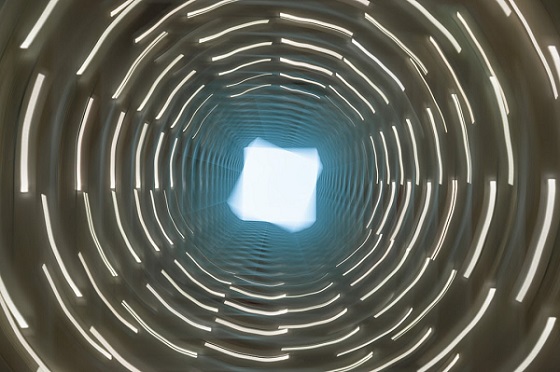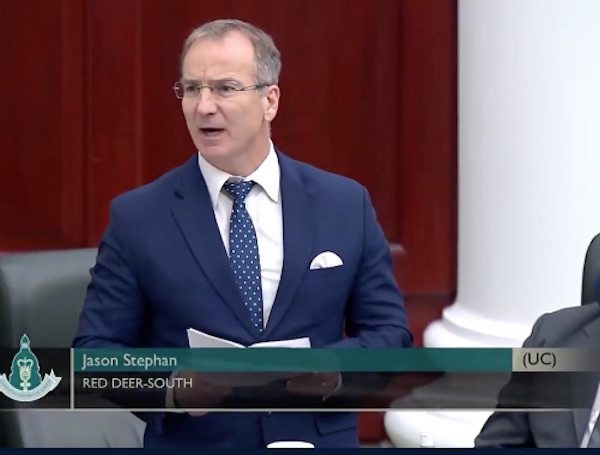National
Conservative candidate says he’s been booted for opposition to mandated vaccinations and vaccine passports

Jonas J. Smith Disallowed as Conservative Party of Canada Candidate for the Yukon
National
Eco-radical Canadian Cabinet minister resigns after oil deal approved

From LifeSiteNews
Steven Guilbeault, a Quebec MP who had formerly served as Justin Trudeau’s Minister of Environment, said he was leaving the Cabinet because his ‘climate’ policies were being abandoned.
One of Canada’s most radical environmentalist politicians has resigned from Prime Minister Mark Carney’s Cabinet.
Steven Guilbeault, until recently the Culture Minister, quit his position after the federal government struck a deal with the province of Alberta that relaxes environmental regulations and allows the construction of a new oil pipeline.
On Thursday, November 27, Guilbeault, a Quebec MP who had served as former Prime Minister Justin Trudeau’s Minister of Environment, said he was stepping down because his “climate” policies were being abandoned.
“This afternoon, it is with great sadness that I submitted my resignation to the Prime Minister as Minister of Canadian Identity and Culture and Minister responsible for Official Languages, Minister of Nature and Parks Canada, as well as his Lieutenant in Quebec,” he said in a statement.
“When I entered politics, it was because I had a deep conviction that I could make a difference in fighting climate change and protecting our environment. My commitment to leaving a better world for the future of our children and our planet remains unchanged.”
Alberta Premier Danielle Smith and Prime Minister Mark Carney signed on Thursday a memorandum of understanding (MOU) which will let Alberta build an oil pipeline to the coast of British Columbia. It also lessens tanker restrictions and allows Albertan oil to be sold on Asian markets. The pipeline still faces opposition from British Columbia’s ruling New Democratic Party government.
The MOU agreement changes a host of other green-related initiatives that Guilbeault had a hand in, such as imposing an emissions cap on the oil and gas sector and new Clean Electricity Regulations. Under the deal, Alberta will be exempt from these radical environmental regulations.
Premier Smith has been battling Guilbeault over his extreme climate change policies for years now. She said of the recent MOU that, although it’s a “massive win for Alberta and Canada, we will still hold the federal government accountable for keeping their end of the bargain.”
“There’s a lot of work left to do so let’s roll up our sleeves and get the job done, Alberta!” she stated.
Smith has repeatedly defended Alberta from Trudeau-era climate regulations and asserted Alberta’s right to control its power grid, also promising the province will not be “transitioning away” from oil and natural gas. She had called on the then-prime minster to replace Guilbeault because he was too “extreme.” Last year, Smith blasted the Minister after he said the federal government would no longer fund road construction projects and instead funnel the savings to “climate change” projects.
Alberta does have support from the Supreme Court, however, which recently sided in favor of provincial autonomy when it comes to natural resources. The Supreme Court ruled that Trudeau’s law, C-69, dubbed the “no-more pipelines” bill, is “mostly unconstitutional.” This was a huge win for Alberta and Saskatchewan, who challenged the law in court. The decision returned authority over the pipelines to provincial governments, meaning oil and gas projects headed up by the provinces should be allowed to proceed without federal intrusion.
Guilbeault’s extreme eco-activist past
Guilbeault, under Trudeau’s watch, pushed a radical environmental agenda similar to the World Economic Forum’s “Great Reset” and the United Nations’ “Sustainable Development Goals.”
He was as extreme as they come for an environment minister, and his background shows a history of breaking the law for ideological aims. In 1997, he joined Greenpeace and served for a time as a director and then campaign manager of its Quebec chapter for a decade.
He was arrested many times for environmental protests, the most famous arrest coming after an incident in 2001 when he climbed Toronto’s CN Tower with British activist Chris Holden. The pair hung a banner saying “Canada and Bush — Climate Killers.”
Greenpeace is a group that advocates for population control in addition to calling for an end to all oil and gas.
His extreme ideals continued in his role as environment minister. He threatened Saskatchewan Premier Scott Moe, who said that his province would no longer collect a federally imposed carbon tax on electric heat in addition to natural gas, with arrest and jail.
While Minister of Environment, Guilbeault was hoped to create a new “global’ carbon tax applied to all goods shipped internationally that could further drive-up prices for families already struggling with inflated costs.
The reduction and eventual elimination of the use of so-called “fossil fuels” and a transition to unreliable “green” energy has also been pushed by the World Economic Forum – the globalist group behind the socialist “Great Reset” agenda – an organization in which Trudeau and some of his cabinet have been involved.
The reality of Trudeau’s, and then Carney’s push, for so-called renewable energy showed itself just over a month ago when Alberta’s power grid faced near certain collapse due to a failure of wind and solar power.
Alberta
IEA peak-oil reversal gives Alberta long-term leverage

This article supplied by Troy Media.
The peak-oil narrative has collapsed, and the IEA’s U-turn marks a major strategic win for Alberta
After years of confidently predicting that global oil demand was on the verge of collapsing, the International Energy Agency (IEA) has now reversed course—a stunning retreat that shatters the peak-oil narrative and rewrites the outlook for oil-producing regions such as Alberta.
For years, analysts warned that an oil glut was coming. Suddenly, the tide has turned. The Paris-based IEA, the world’s most influential energy forecasting body, is stepping back from its long-held view that peak oil demand is just around the corner.
The IEA reversal is a strategic boost for Alberta and a political complication for Ottawa, which now has to reconcile its climate commitments with a global outlook that no longer supports a rapid decline in fossil fuel use or the doomsday narrative Ottawa has relied on to advance its climate agenda.
Alberta’s economy remains tied to long-term global demand for reliable, conventional energy. The province produces roughly 80 per cent of Canada’s oil and depends on resource revenues to fund a significant share of its provincial budget. The sector also plays a central role in the national economy, supporting hundreds of thousands of jobs and contributing close to 10 per cent of Canada’s GDP when related industries are included.
That reality stands in sharp contrast to Ottawa. Prime Minister Mark Carney has long championed net-zero timelines, ESG frameworks and tighter climate policy, and has repeatedly signalled that expanding long-term oil production is not part of his economic vision. The new IEA outlook bolsters Alberta’s position far more than it aligns with his government’s preferred direction.
Globally, the shift is even clearer. The IEA’s latest World Energy Outlook, released on Nov. 12, makes the reversal unmistakable. Under existing policies and regulations, global demand for oil and natural gas will continue to rise well past this decade and could keep climbing until 2050. Demand reaches 105 million barrels per day in 2035 and 113 million barrels per day in 2050, up from 100 million barrels per day last year, a direct contradiction of years of claims that the world was on the cusp of phasing out fossil fuels.
A key factor is the slowing pace of electric vehicle adoption, driven by weakening policy support outside China and Europe. The IEA now expects the share of electric vehicles in global car sales to plateau after 2035. In many countries, subsidies are being reduced, purchase incentives are ending and charging-infrastructure goals are slipping. Without coercive policy intervention, electric vehicle adoption will not accelerate fast enough to meaningfully cut oil demand.
The IEA’s own outlook now shows it wasn’t merely off in its forecasts; it repeatedly projected that oil demand was in rapid decline, despite evidence to the contrary. Just last year, IEA executive director Fatih Birol told the Financial Times that we were witnessing “the beginning of the end of the fossil fuel era.” The new outlook directly contradicts that claim.
The political landscape also matters. U.S. President Donald Trump’s return to the White House shifted global expectations. The United States withdrew from the Paris Agreement, reversed Biden-era climate measures and embraced an expansion of domestic oil and gas production. As the world’s largest economy and the IEA’s largest contributor, the U.S. carries significant weight, and other countries, including Canada and the United Kingdom, have taken steps to shore up energy security by keeping existing fossil-fuel capacity online while navigating their longer-term transition plans.
The IEA also warns that the world is likely to miss its goal of limiting temperature increases to 1.5 °C over pre-industrial levels. During the Biden years, the IAE maintained that reaching net-zero by mid-century required ending investment in new oil, gas and coal projects. That stance has now faded. Its updated position concedes that demand will not fall quickly enough to meet those targets.
Investment banks are also adjusting. A Bloomberg report citing Goldman Sachs analysts projects global oil demand could rise to 113 million barrels per day by 2040, compared with 103.5 million barrels per day in 2024, Irina Slav wrote for Oilprice.com. Goldman cites slow progress on net-zero policies, infrastructure challenges for wind and solar and weaker electric vehicle adoption.
“We do not assume major breakthroughs in low-carbon technology,” Sachs’ analysts wrote. “Even for peaking road oil demand, we expect a long plateau after 2030.” That implies a stable, not shrinking, market for oil.
OPEC, long insisting that peak demand is nowhere in sight, feels vindicated. “We hope … we have passed the peak in the misguided notion of ‘peak oil’,” the organization said last Wednesday after the outlook’s release.
Oil is set to remain at the centre of global energy demand for years to come, and for Alberta, Canada’s energy capital, the IEA’s course correction offers renewed certainty in a world that had been prematurely writing off its future.
Toronto-based Rashid Husain Syed is a highly regarded analyst specializing in energy and politics, particularly in the Middle East. In addition to his contributions to local and international newspapers, Rashid frequently lends his expertise as a speaker at global conferences. Organizations such as the Department of Energy in Washington and the International Energy Agency in Paris have sought his insights on global energy matters.
Troy Media empowers Canadian community news outlets by providing independent, insightful analysis and commentary. Our mission is to support local media in helping Canadians stay informed and engaged by delivering reliable content that strengthens community connections and deepens understanding across the country.
-

 Alberta2 days ago
Alberta2 days agoFrom Underdog to Top Broodmare
-

 Opinion24 hours ago
Opinion24 hours agoLandmark 2025 Study Says Near-Death Experiences Can’t Be Explained Away
-

 Focal Points1 day ago
Focal Points1 day agoSTUDY: TikTok, Instagram, and YouTube Shorts Induce Measurable “Brain Rot”
-

 Alberta23 hours ago
Alberta23 hours agoRed Deer’s Jason Stephan calls for citizen-led referendum on late-term abortion ban in Alberta
-

 Health1 day ago
Health1 day agoTens of thousands are dying on waiting lists following decades of media reluctance to debate healthcare
-

 Indigenous22 hours ago
Indigenous22 hours agoIndigenous activist wins landmark court ruling for financial transparency
-

 Business20 hours ago
Business20 hours agoMan overboard as HMCS Carney lists to the right
-

 Alberta21 hours ago
Alberta21 hours agoCarney forces Alberta to pay a steep price for the West Coast Pipeline MOU



